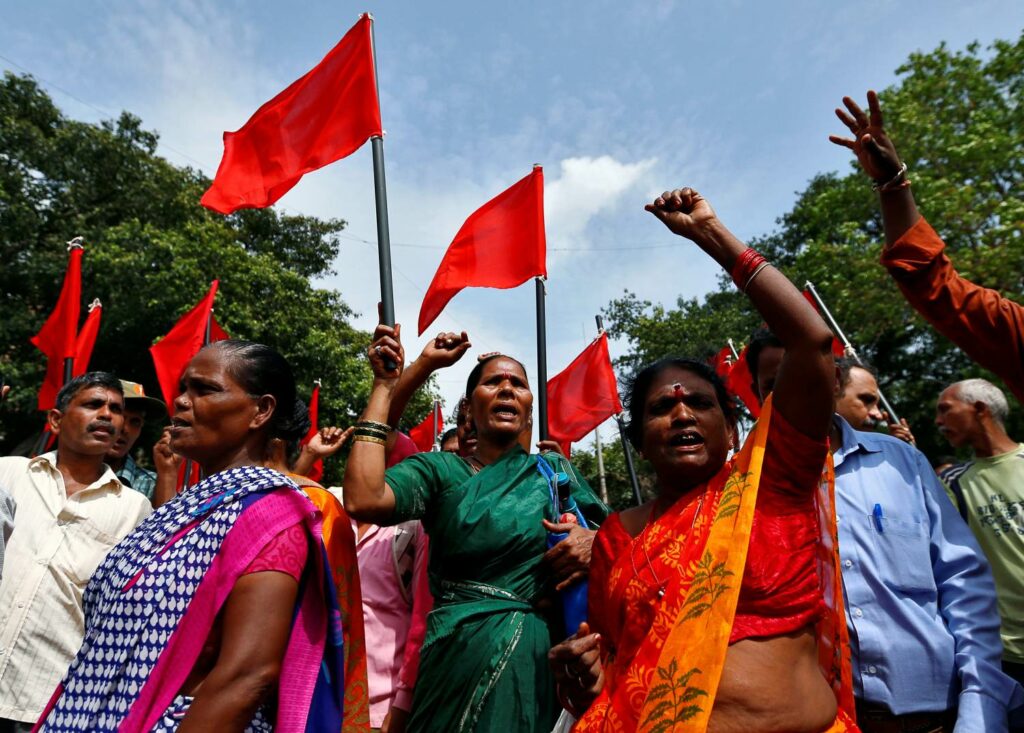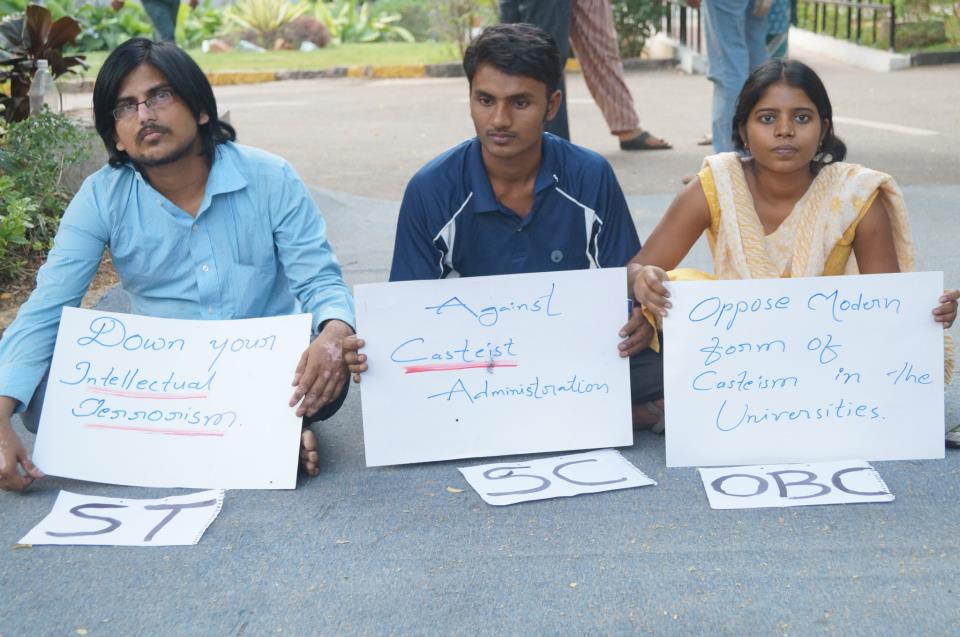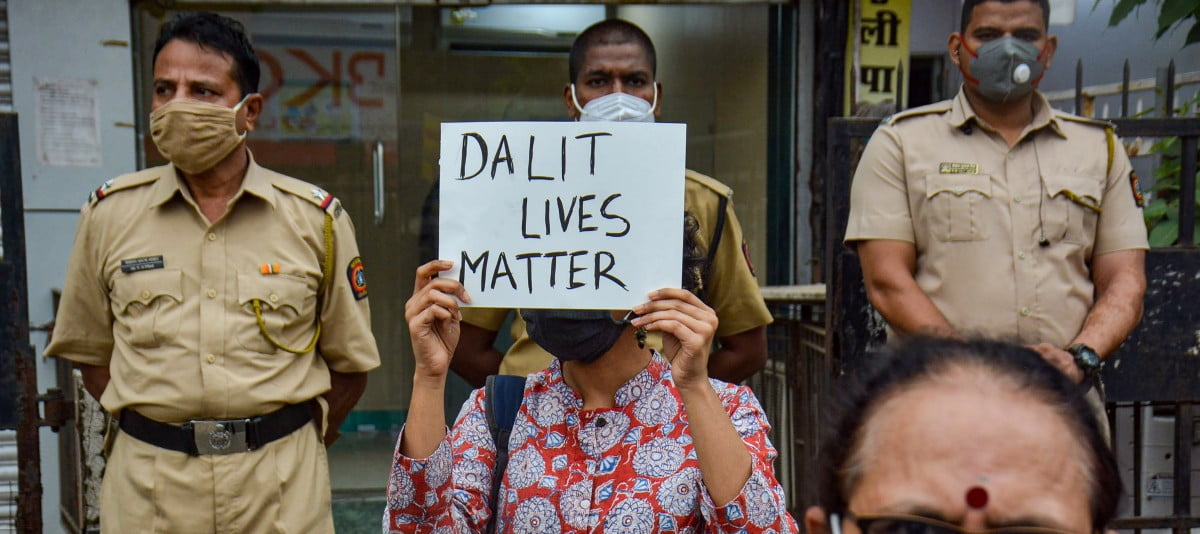There is a serious dilemma at hand in Indian institutions as the number of suicide deaths that occur in educational facilities and institutional murders increase daily. The murder of 19-year-old Darshan Solanki, a first-year BTech student who was studying at IIT Bombay, died by suicide in the hostel building and recently, the death by suicide of a Dalit woman doctor in Punjab, all point towards discrimination based on caste. The Wire reported that Solanki was facing isolation and discrimination on campus since he was from the Dalit community in Gujarat.
The death has triggered many individuals, particularly SC and ST in the country, who are battling the estrangement from various domains of the country to acquire equal rights and justice for the community. At the same time, another case was reported of a 20-year-old female engineering student who died by suicide in Telangana and who had been allegedly harassed by a male acquaintance.
The institutional murders are driven by the act or inaction of educational institutes that lack empathy and a caste discrimination-free campus. The excessive imposition of academic pressure on students especially targeting individuals based on gender, income, class, culture, or caste, creates the trajectory of homicides in universities. Citing the report released by Indian Express in 2021, around 122 students in IITs, IIMs, and Central universities died by suicide between 2014-21, of which 24 students belonged to the SC community, 3 were from STs, and 41 were OBCs.

According to Articles 15 and 16 of the Indian constitution, the purpose of reservation in India is for the advancement of Scheduled Castes and Scheduled Tribes. To an extent, reservation is a policy in states to rectify the social injustice of certain castes. However, in many institutions in India students from a particular community are getting mobbed by the upper-class administrative regulations on them. Initially, the reservation was limited to SC and ST communities. It is in the wake of the Mandal Commission report in 1990 the scope of reservation for Other Backward Communities widened.
While we look at OBC reservations in the country, the reservations are formed to include individuals from lower income and social status excluding those who are privileged in the category of other backward communities. Similarly, the Economically Weaker Section (EWS) reservations were introduced by the Central Government of India adding the 103rd Constitutional Amendment Act, 2019. EWS reservation provides a ten per cent allocation for candidates who are in the general category.
Corresponding to the Data Point podcast by The Hindu on ‘Dissecting Caste Discrimination In India‘, it uncovers the data that the acceptance of SC, ST, and OBC PhD candidates are below 8 per cent from receiving hundreds of applications. In 2021, IIT Delhi received 637 eligible PhD applicants but none of them has been admitted. Similarly, the statistics of students admitted to IIT Tirupati, Goa, and others are 0.8 to 1.2 per cent of the total in which the general category has cleared above 41 per cent of total applications received.

Despite the reservation, India is providing adequate space for students in the country to address the inequalities and limited opportunities. The rise in cases of murder of students who are from marginalised communities is appalling and shameful. However, the reservation system in the country is criticised and perpetuates the idea of income or merit-based selection instead of caste separation. Having said that, there is a lack of awareness that reflects on individuals from the open category. There are students as well from families that are financially sound in the reserved categories and those who require assistance in the general category.
Also Read: JNU Viva Voce Discrimination: Upper-Caste Gatekeeping Of Education
However, the institutional murders of Dalit students are increasing in the country, so it is significant to rationalise the system that promotes injustice on the background of caste divisions. Thus, regardless of caste or class, it is necessary to understand how many students are constituted in the category of humans we are losing every year.
A few days ago, TNM reported that a 16-year-old named Nagula Sathwik, a first-year student of Mathematics, Physics, and Chemistry (MPC) studying at the Sri Chaitanya Junior College in Narsingi, Hyderabad died by suicide because of physical abuse and harassment from teachers and the hostel warden. Following the strong protest of the National Students Union of India, the police registered a case against the college and hostel authorities under Section 305 of The Indian Penal Code for the act of abuse that drove the student to take this step.

According to the latest report of the National Crime Record Bureau (NCRB) 1.64 lakh persons died by suicide, an increase of 7.2 per cent from 2020 in which the percentage of students dying by suicide is 8 per cent for the reasons such as academic pressure, social stigma, caste discriminations, mental illness, abuse of management and many. It has become an academic culture in schools or colleges to judge or compare one student based on his or her academic variability. More than providing assistance to students who score less in the class in the majority of educational institutions in the country, the tutors are keen to find the better one in the class.
Also Read: Doctor Payal’s Fight Against Institutional Caste Discrimination
Similarly, the process of seating arrangements based on the academic ability of students, verbal abuse, and humiliation in front of their classmates has become a significant factor in the rising suicides in the country. Apart from the abuse of college authorities, in many institutes, some students are alienated from class groups, societal works, fests, and many more.
A country in which ninety-one per cent of parents approve of corporal punishment in schools and seventy-four per cent admit that they use it at home. About 80-100 per cent of underprivileged children in India are corporally punished by teachers for lower attendance, inability to complete homework, and many others. According to the Indian Express report, 75 per cent of marginalised children are beaten by their teachers regularly, many of them every day. The students also feared telling their parents because they might beat them too.

The same students that half of the parents and teachers are forcefully moulding every year to get admission in one of the top institutes in India like IIT, IIM, Central universities, and many, subsequently completing the toughest entrance examinations conducted by these institutes are again stigmatised on the ground of caste, class, gender, and others in the campus, same as the students are purchasing their tickets to academic pressure, impermanence, and distress.
Also Read: Caste Violence and Mob Lynching: Viswanathan’s Death In Kerala
Having said that, suicide is the second leading reason for death among adolescents and adults in India. India bears the world’s highest suicide rates among youngsters embodies peer pressure, fear of failure, depression, and unemployment, the enactment of healthy counselling cells in educational institutes is the need of the hour.
Thus, Indian institutes and universities are hatcheries of mental stress. In various top universities in the country for instance many of the colleges in the University of Delhi hold a dead counselling cell on the campus however the number of institutional murders occurring is unbalanced. It is the obligation of management to ensure the mental health of their students as well as provide a healthy atmosphere in academics.






